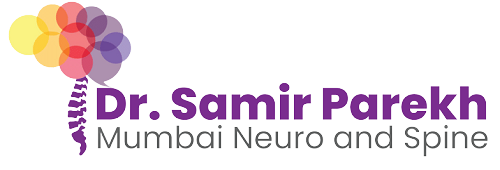Neurological emergencies in Mumbai
Some neurological conditions are considered medical emergencies.
In fact, acute neurological illness is one of the common causes for admission in the emergency. There are a number of such conditions and it is worthwhile to understand what one needs to do when someone develops neurological emergencies.
The major emergencies are stroke, fainting and seizures.
Stroke
Stroke is an acute vascular event in the brain. It is due to a block in the blood vessel or repute of the blood vessel. The awareness of the illness and preventive measures is less compared to heart attacks even though it is one of the most common causes of death / disability. Stroke can happen at any age, as the main risk factors are hypertension, dyslipidemia, diabetes and smoking, which are not exactly age specific. Stroke can manifest with loss of consciousness, weakness of limbs, slurring or loss of speech and memory disturbance. Yes, indeed, this is truly the kind of medical emergency where every minute counts. The patient needs to be brought immediately to the hospital. If thrombolysis is done at the appropriate time, (within 3 hours of stroke) the severity of the stroke can be reduced which makes a significant difference to the outcome.
Fainting
Loss of consciousness is one of the common neurological emergencies. Epilepsy, sudden drop in blood pressure, stroke, poisoning, low sodium in the blood and liver or renal dysfunction are some of the causes of unconsciousness. Most of these causes are reversible. The outcome depends on the treatment of primary condition.
Sudden onset severe headache
Patients attending emergency with sudden onset of severe headache need to be examined by the specialist carefully to exclude causes like brain hemorrhage, meningitis and acute migraine. It is better not to neglect any acute headache, as most of these conditions are treatable.
Convulsions [fits]
There are many different types of seizures. Seizure activity may range from simple blank staring to loss of consciousness with spasticity or muscle jerking. Common generalized seizures often begin when the person cries out or makes some sound. This may be followed by several seconds of abnormal stiffening, progressing to abnormal rhythmic jerking of the arms and legs. The eyes are generally open, but the person is not responsive or alert. The person may not appear to be breathing. They are, however, actually usually breathing adequately for the brief duration of the seizure.
The person often breathes deeply for a while after an episode. He or she will return to consciousness gradually over several minutes. Incontinence of urine may also occur. Never ignore any seizure. It is advisable to consider all seizures as emergencies and take the patient immediately to the hospital for an examination by a neurologist.
Guillain-Barre Syndrome
This is a condition where, following a viral illness, the patient can develop weakness in the limbs and numbness. The antibodies produced during the viral illness sometimes attack the nerve sheath or the nerve fibres. There are specific treatment measures for the illness with good outcome in a large percentage of the patients.
Myasthenia Gravis
This is a less common condition where there is a problem at the junction of the nerve and muscle. It can present with double vision swallowing difficulty, breathing difficulty or generalized weakness. Patient can come with increase in the symptoms to the emergency. The outcome is good in most of the patients, as there are clear guidelines for its management.




